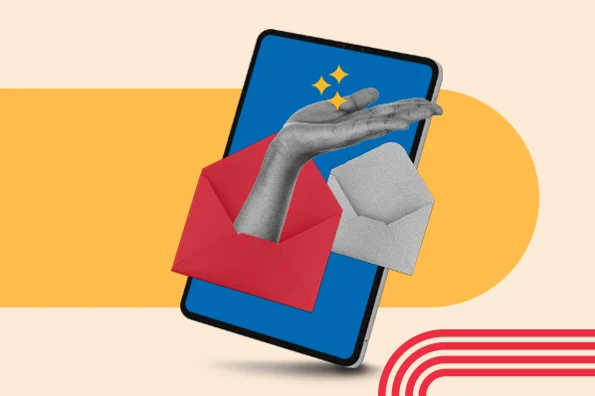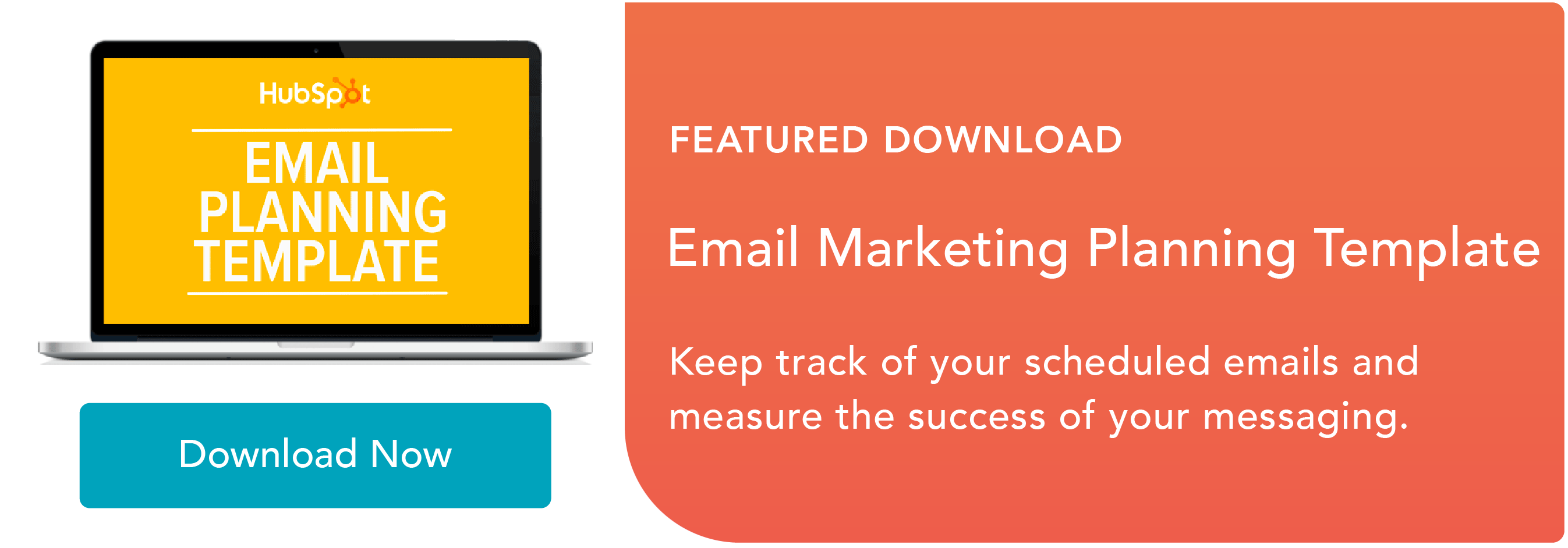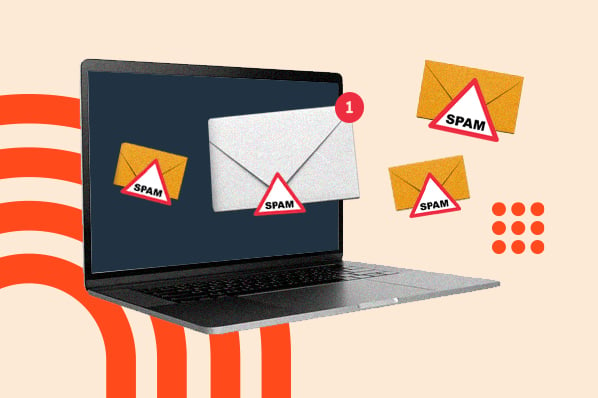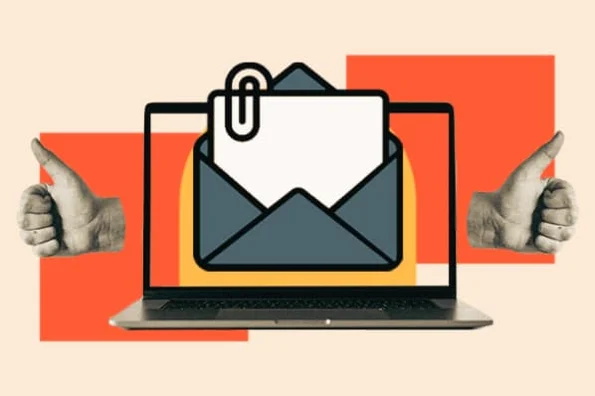While brands might want to use a do not reply email for things like receipts, confirmations, or reminders, these can have adverse effects on your email marketing.
Below are just a few reasons why you should avoid do not reply emails.
1. Negatively influences email deliverability: Email deliverability is the rate at which your email actually makes it into your recipient's inboxes. To have successful email marketing campaigns, your emails need to be delivered. However, do not reply emails usually end up in spam folders since email providers use filters to prevent spam messages. Additionally, it's frustrating for your audience to receive one-way communication.
2. Dissuades two-way communication: Two-way communication is the best way to learn about your audience and encourage engagement with your brand. Plus, communication with your customers impacts brand loyalty and overall customer experience. With do not reply emails, you're effectively telling your customer to "talk to the hand." How can you improve your customer experience or measure the success of your email marketing if your customers can't respond to you? Spoiler alert: You can't. Additionally, when your audience can't add you to their address book, your emails are more likely to end up in the spam folder, which impacts email deliverability.
3. They aren't compliant: According to GDPR and CAN-SPAM laws, customers need to be able to request information about the data collected about them and opt-out of your messages with a reply email. Do not reply emails can prevent both of those things from happening, which would make your emails non-compliant and punishable by a hefty fine.
So, now that we know why do not reply email addresses are a bad idea, what should you do instead? Below, let's dive into alternatives to creating a do not reply email.
To create this email address, all you need to do is follow these simple steps:
- Log in to your email
- Add user
- Add email address
- Add account
- Type in the alias name
- Click save
Setting up an email alias should be easy with your email service provider. For example, at HubSpot, the free email marketing tool can help with this.
Creating an email alias instead of using a do not reply email is important because it can help:
1. Foster communication: When subscribers give you their email address, they're trusting you with their data, so you should reciprocate and trust them with yours. When customers have questions or suggestions or comments, they should be able to reach out. This type of communication will help you get to know your audience and improve your customer experience. Additionally, you want to encourage engagement with your emails so your email marketing campaigns succeed.
2. Keep subscriber lists up-to-date: Receiving auto-responder emails such as "message delivery notification" or "message failed to send" can help you keep your subscriber list up to date. With this information, you can delete inactive emails, and improve your email deliverability in one fell swoop.
3. Improve email deliverability: We can't stress this enough: email deliverability is important for the success of your email marketing campaigns. With an email alias, your emails are less likely to go to the spam folder. Plus, your audience can save these email addresses to their contacts, so you don't go to the promotion folder.
Do Not Reply Email Best Practices
While you shouldn't use do not reply email addresses, you can still successfully send transactional messages to your audience in an efficient way.
Below, let's jump into the five best practices while sending these messages.
1. Switch to an alias.
Instead of using a do not reply email, set up an email alias instead. Email aliases are going to be easier to monitor because the replies won't get sent one person's inbox. With an email alias, several employees and teams can monitor the replies, so messages get responses in a timely manner.
2. Interact with your customers and increase engagement.
When customers respond with a request, make sure you reply. To do this, you might need to have several team members monitor your email aliases.
Listen to your audience and send them resources to make their lives easier. This could mean that you create resources such as blog posts or knowledge base articles around commonly asked questions.
Additionally, by engaging in a helpful conversation with your audience, you'll get to know them better, and have a pulse on what their pain points are.
Two-way communication is the best way to increase engagement, improve your customer experience, and build brand loyalty.
3. Filter out unnecessary responses.
Typically, email service providers can filter out unnecessary emails. For example, you should be able to set up a filter that sorts emails containing words like "message delivery notification" or "automated response" to your trash, spam, or another folder of your choice.
If you want to keep your contact list up to date, you might filter these messages to an "Updated Lists" folder that team members go through to update your subscriber list.
4. Set up an autoresponder.
An autoresponder could let your customers know that you got their email and will get back to them within a certain amount of time.
In this email, you can include helpful information such as contact information for support, or an email address for urgent communication.
Additionally, you might want to include resources, such as FAQ or blogs, to answer common questions.
5. Adjust the reply-to email address.
If you decide to go with the personalized approach to email aliases, and you included an executive leader's name in the email alias, you probably don't want that person to have to monitor the replies.
That's why you can set up a different reply-to email address in your email service provider. Replies can go to a certain team member or another email alias that's monitored by your team.
Although it might be tempting to use a do not reply email address, it's important to encourage conversation with your audience. This could help you improve the customer experience and get to know your audience, which should improve your overall email marketing campaigns.
Email Deliverability



![Why email whitelisting is important for marketers [+ detailed steps on how to do it]](https://53.fs1.hubspotusercontent-na1.net/hubfs/53/%5BUse%20(1).webp)



![How to Bypass the Toughest Email Spam Filters [Infographic Checklist]](https://53.fs1.hubspotusercontent-na1.net/hubfs/53/marketer%20getting%20email%20past%20spam%20filter.jpg)

![4 Easy Steps to Get a Custom Email Domain [+ Key Features to Look For]](https://53.fs1.hubspotusercontent-na1.net/hubfs/53/custom-email-domain.jpg)


![Email Deliverability: 5 Quick & Effective Ways to Increase It [+IG]](https://53.fs1.hubspotusercontent-na1.net/hubfs/53/email-deliverability-1.jpg)